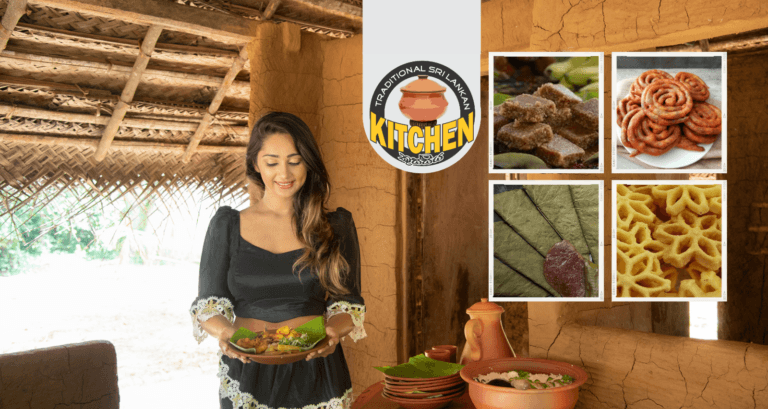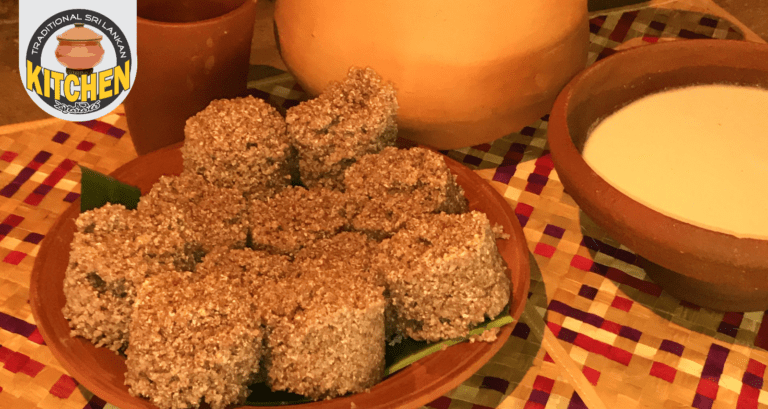The Traditional Kitchen Tools of A Sri Lanka
Clay Cooking Pots
Clay cooking pots are a traditional kitchen tool used in Sri Lanka for centuries. These pots are made of clay and are designed to withstand high temperatures, making them ideal for cooking a variety of dishes.
The most common type of clay pot used in Sri Lanka is called “halapa.” This pot is made by shaping clay into a rounded pot and then firing it in a kiln. Halapa pots are known for their durability and their ability to evenly distribute heat.
In Sri Lankan kitchens, clay pots are often used for cooking rice, curries, and other dishes. The pots are heated over a flame or stove and the food is cooked directly in the pot. The porous nature of the clay allows for natural steam circulation, which helps to cook the food evenly and retain its flavor and nutrients.
Clay pots are also valued for their ability to enhance the taste of food. The minerals present in the clay react with the food, adding a distinct flavor to the dish. Additionally, using clay pots for cooking is considered to be healthier as it requires less oil and the pots are free of harmful chemicals.
In recent years, the use of clay pots has declined due to the availability of modern cooking tools. However, many Sri Lankan households still use clay pots for traditional cooking, and the pots remain an important cultural symbol of Sri Lankan cuisine.
Nambiliya
This tool is used to wash rice and separate the grains from chaff and small stones. It is likewise composed of clay, just like the walang. The interior of the bowl-shaped nambiliya is engraved with lines or grooves. The water and rice were added to the container, and the mixture was whirled to mix the contents. The stones would get caught in the grooves, while the chaff would float to the top. The rice and water were then added, and the bath muttiya, rice cooker, or cooking pan, was ready for use.
Grinding Stones
These things are referred to as the miris gala (literally, “chilli stone”) and the kurahan gala (literally, “finger millet stone”) in Sinhalese. Two chunks of hefty, thick stone—typically granite—that are together form the miris gala. The base is made of flat stone, and a cylindrical stone that resembles a rolling pin is used to smash the ingredients—typically chiles for pol sambol or lunu miris—before they are utilised.
However, the kurahan gala is a device used to grind rice or finger millet, also known as kurakkan, into flour that is used in cooking. It is frequently fashioned of granite, much like the Miris Gala. It is made up of two stones, one of which is the circular base and the other is an oval-shaped stone with two holes drilled into it on either side. The stones were stacked on top of one another. Turning the grinding stone on its base requires inserting a wooden stick-like instrument into one of the holes.
Nowadays, these tools are seldom ever seen unless one journeys outside of urban and suburban regions because to the abundant availability of various spice powders and flours in grocery shops and supermarkets.
String Hopper Press And Mats
By squeezing a dough comprised of flour and water through a short metal tube known as a string hopper press or string hopper mould, we may create the much-loved rice flour and kurakkan flour string hoppers. It produces the thin, noodle-like string hoppers we are familiar with and is referred to as an indiappa wangediya in Sinhala.
They are then placed on small, round mats—called indiappa thattu—and steamed. The press was traditionally made out of fired wood and the mats out of bamboo, but now stainless steel presses and plastic mats are more in use in the kitchens of local homes and street shops.
Coconut Scraper
The cuisine on our island frequently uses coconut milk and grated coconut. In the majority of Sri Lankan families, a coconut scraper, also known as a hiramanaya, was the kitchen tool of choice for shredding coconuts. The hand crank coconut scraper, which is typically fastened on to the kitchen counter or table, is the more contemporary variant of the coconut scraper. With one hand, turn the coconut scraper’s crank while holding a split coconut in the other. The coconut scraper’s blades, which are semicircular and serrated, are attached to one end, and they grate the coconut’s flesh into tiny flakes.
Mortar And Pestle
The mortar and pestle, also referred to as the wangediya and the mol gaha in Sinhalese, is used to crush spices for curries such cumin, ginger, and garlic. The chalice-shaped mortar is filled with the ingredients, and the pestle is used to smash the spices.
The traditional mortar and pestle comes in two sizes; the smaller one is made of wood and can be placed on a table or other flat surface. The larger version has a pestle made of a large wooden rod and a stone mortar. Only the floor would work for keeping this.
Even now, this specific culinary appliance can be found in a Sri Lankan home’s kitchen, commonly being used to prepare pol sambol or lunu miris. To make pol sambol, ingredients such as grated coconut, finely chopped onion, chilli powder, chilli flakes, salt, maldive fish, and lime are combined in a mortar and smashed. To make lunu miris, the same procedure was used with finely chopped onion, chilli powder, chilli flakes, and lime.
Clay Water Pitcher
The clay used to make these water pitchers has been baked and solidified, yet it is still porous enough to allow the water within to be cooled by the night air.
The ceramic water jug or vessel known as the guruletthuwa was customarily used in Sri Lankan houses. It is also formed of clay that has been dried in the sun or burned, but the clay was still porous enough to allow the night air to cool the water that was kept inside of it overnight. The water container, also known as the kala gediya, is its companion and is used to get water from a well or river. In certain homes today, the guruletthuwa can still be found, occasionally accompanied by coordinating pottery mugs or tumblers.
Coconut Shell Spoons
The well-known polkatu handi complements the earthen pots used to traditionally prepare our rice and curries. The handle of the spoons is fashioned from wood from the coconut tree, while the head is made from the lower portion of a clean, sandpapered coconut shell.
Winnower
This serves a variety of functions and is also referred to as a winnower in English. It was formerly employed as a paddy winnower to separate paddy from other types of soil. Many different household appliances have taken the place of the Kulla. Today, the is primarily utilised as decorations for homes, restaurants, and as ornaments. A variety of techniques are used by highly trained Sri Lankan craftsmen to create our kulla. This winnower’s construction material, dried cane vine, is renowned to be eco-friendly, secure, and non-toxic.






